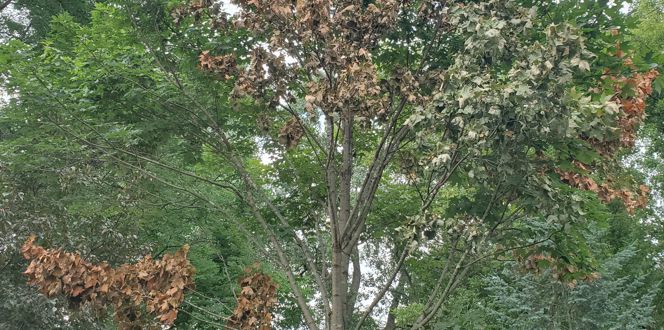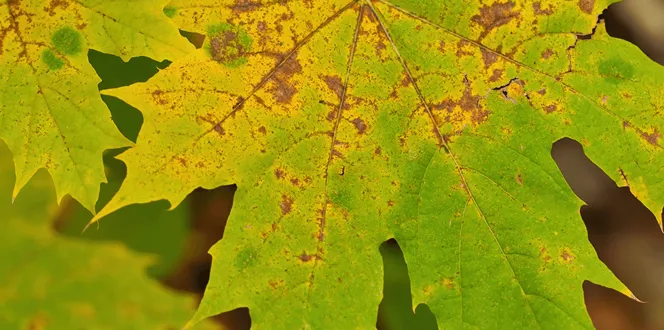Maple trees are one of the top ten most popular trees in the USA. That’s easy to believe when you see their mesmerizing fall color and perfect-as-can-be leaves.
But what happens when those leaves begin to look less than perfect?
Tom, a Davey Tree blog reader, noticed his maple was struggling and reached out to us for help. Tom asked, “My wife and I have a 30-year-old maple tree in our backyard that has been showing signs of stress. The leaves are small, and some of the maple tree branches are dying. Do you have any recommendations, or is it too late?”
Let’s dive into what may be causing these signs of maple tree stress and dieback.
Maple Tree Branches Dying. Small Leaves. Early Fall Color. Is My Maple Tree Dying?
If you spot the above symptoms on your tree, maple decline could be plaguing your tree. Also, look for leaves that are too light in color or look burnt. If there are fewer leaves than normal, that’s another telltale sign.
What exactly is maple decline?

Unlike many of the problems your tree faces, maple decline is not a tree disease or a tree pest.
Instead, maple decline is a result of trees living in an urban environment instead of a forest. Let’s break that down.
In forests, trees have loads of rich, natural resources that they need to survive and thrive. But when growing in your yard, trees often lack necessities, like nutrients and water, so they struggle. Check out the top five problems trees encounter in our yard.
Unless you provide your tree with the essentials, trees enter a cycle of decline. When that happens, they continue to suffer, and without intervention, trees likely won’t recover.
How can I help my maple tree recover from stress?
Develop a plant health care plan for your tree. This ensures your tree has enough water, nutrients and sunlight to survive, while pests and diseases are managed to reduce stress and damage. Plus, a tree expert regularly looks for signs of problems like these before they lead to decline. Often, there are subtle signs and symptoms, or underlying changes, that only a trained expert can spot. When you invest in proactive care, trees encounter fewer problems and avoid decline altogether.
For example, when Tom shared pictures of his unhealthy maple, we saw girdling roots. Those make it hard for the tree to intake water and nutrients properly as the stem and major roots are constricted. As you would guess, that was a big part of why his maple was in decline.
Other treatable underlying conditions might include soil compaction, tree overcrowding, and high soil pH.
Once you know what’s plaguing your tree, you know what to do next.







